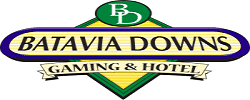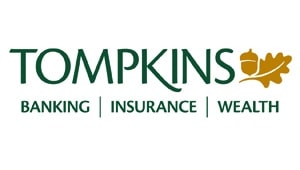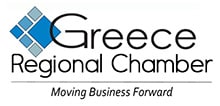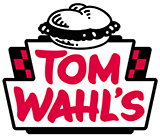By Sabine Siebold
VILNIUS (Reuters) – NATO leaders meet in Vilnius on Tuesday and Wednesday to tackle a wide range of topics, from divisions over Ukraine’s membership bid and Sweden’s accession to boosting ammunitions stockpiles and reviewing the first defence plans in decades.
It will be the fourth NATO summit since Russia’s invasion of Ukraine, with the first held virtually on Feb. 25, 2022, just one day after the assault, followed by meetings in Brussels and in Madrid.
The extraordinary flurry of gatherings stands in contrast to the previous rhythm of annual NATO summits and shows how war on its doorstep has forced the alliance to strengthen cooperation.
Following is a list of the main issues to be discussed:
UKRAINE MEMBERSHIP
The summit looks set to be dominated by how NATO will define its future relationship with Ukraine, amid repeated calls by President Volodymyr Zelenskiy for Kyiv to receive an invitation into the alliance at Vilnius.
NATO Secretary-General Jens Stoltenberg has said that Kyiv will not become a member while war rages and that the summit will not issue a formal invitation.
Still, allies are divided over how swiftly Ukraine should be allowed to join after the fighting ends.
While eastern European countries say a road map should be offered to Kyiv, the U.S. and Germany are wary of any move that might take the alliance closer to war with Russia.
In the run-up to Vilnius, some countries have suggested to allow Kyiv to skip the so-called Membership Action Plan (MAP) programme that sets out political, economic and military targets candidates have to meet and that other eastern European nations had to pass before joining NATO.
Stoltenberg said he had put forward a package that included the removal of MAP but stopped short of confirming a tweet by Ukrainian Foreign Minister Dmytro Kuleba who stated there was a consensus among allies to drop MAP.
With such a move, the alliance could address demands to go beyond the declaration of the Bucharest summit in 2008, which said Ukraine would become a member eventually, without offering Kyiv an actual invitation or timetable.
NATO is also likely to find a stronger wording than in 2008 to underscore Kyiv’s perspective for joining the alliance.
Leaders could agree upon something like “Ukraine’s rightful place is in NATO”, echoing remarks by Stoltenberg on a visit to Kyiv in April, or stress that “trans-Atlantic security would be incomplete without Ukraine”.
SECURITY ASSURANCES FOR UKRAINE
Leaders are expected to discuss what security assurances Kyiv should get for the time after the war, even though these pledges will be bilateral and not issued by the alliance itself.
They will likely include the promise of continued military and financial aid to Kyiv to deter Russia from a renewed attack once the war has ended.
Stoltenberg has underlined that NATO – under Article 5 of the Washington Treaty – will provide full-fledged security guarantees to full members of the alliance only.
BOLSTERING NATO’S EASTERN FLANK
Leaders will approve the first defence plans the alliance has drawn up since the Cold War, detailing how NATO would respond to a Russian attack.
The revival of the so-called regional plans signifies a fundamental shift. With the plans, the alliance also gives nations guidance on how to upgrade their forces and logistics.
NATO had for decades seen no need for large-scale defence plans but with Europe’s bloodiest war since 1945 raging just beyond its borders in Ukraine, it is now warning that it must have all planning in place well before a conflict with a peer adversary such as Moscow might erupt.
Turkey had been blocking approval of the plans over the wording on geographical locations such as Cyprus but allies reached agreement one day before the summit, five diplomats told Reuters.
NATO will also raise targets for the stockpiling of ammunitions as Kyiv is burning through shells much faster than Western countries can produce them.
At the same time, allies will show how they aim to implement NATO’s goal, agreed at last year’s Madrid summit, of putting over 300,000 troops on high alert, up from 40,000 in the past, to counter Russia.
SWEDEN
Sweden had hoped to become the 32nd member of the alliance in Vilnius but Turkey has blocked its accession, accusing Stockholm of harbouring members of militant groups on its territory and saying it must crack down on them before being allowed to join NATO.
Allies hope Turkish President Tayyip Erdogan will lift his opposition at the summit but it was unclear whether this will happen.
UPGRADING NATO’S 2% MILITARY SPENDING TARGET
NATO allies have reached agreement to raise the alliance target for military spending to at least 2% of national GDP, according to two diplomats.
The 31 allies agreed on “an enduring commitment to invest at least 2%” of their GDP into their militaries in the future, two diplomats said.
Stoltenberg had intended to make NATO’s previous military spending target of 2% of national GDP a minimum requirement rather than a goal.
In 2023, even the old target will be met by only 11 of the 31 members of the alliance, according to NATO estimates. The goal was set in 2014, when NATO leaders agreed to increase spending towards 2% of their GDP on defence within a decade.
The 11 allies are the United States, Britain, Poland, Greece, Estonia, Lithuania, Finland, Romania, Hungary, Latvia and Slovakia.
Bringing up the rear are Canada, Slovenia, Turkey, Spain, Belgium and Luxembourg whose defence spending was under 1.4% of GDP.
(Reporting by Sabine Siebold; Editing by Gareth Jones)
Brought to you by www.srnnews.com





















